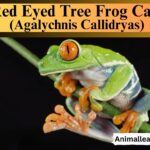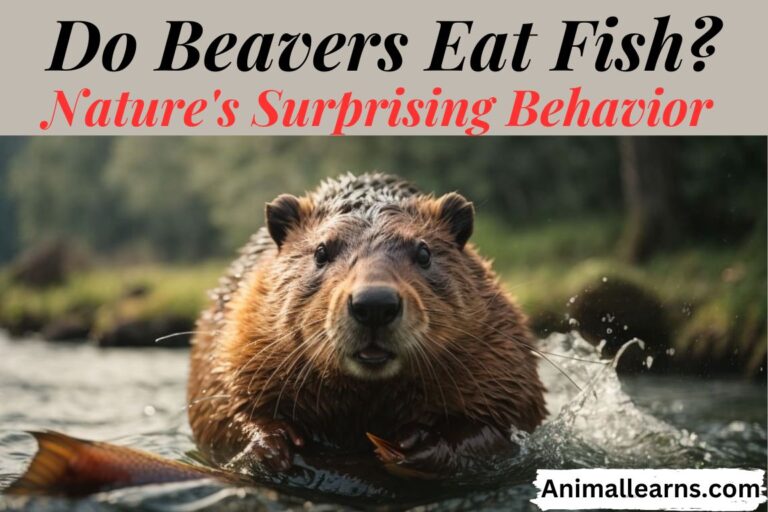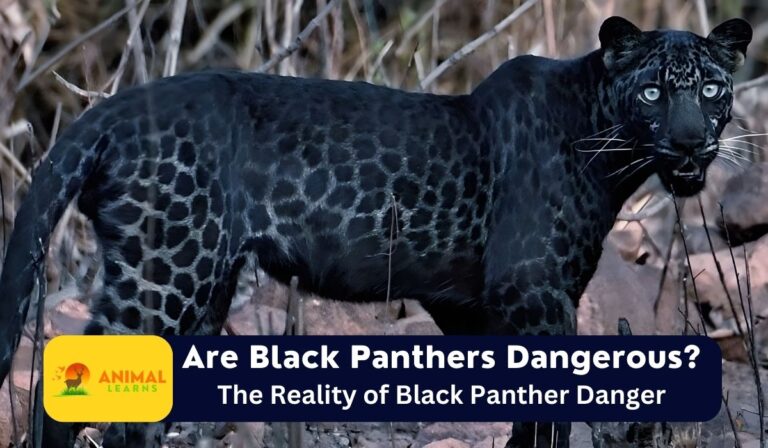15 Animal With Small Eyes: Nature’s Unique Wonders

There may have been animal with small eyes in dark environments, but not every species that inhabits environments with little light has small eyes. Small-eyed animals exhibit a staggering number of traits that go beyond nocturnal habits. Their eye size could represent a number of stories in the world of the animal kingdom.
In the animal kingdom, species come in a wide variety of sizes and shapes, each created to meet a specific niche. There are many animal with small eyes that seem natural to us, which piques our interest in understanding the reasons for these adaptations.
The explanations for this animal with small eyes are in reality as varied as the animals themselves and frequently intertwined. Animals with tiny eyes indicate incredible adaptations in the world of various creatures.
Animals with small eyes and long tails often have characteristics that help them survive. Look at the creature with large eyes and a long tail. Its ability to navigate its environment is demonstrated by the unusual mix of tiny eyes and a long tail on the creature.
animal with small eyes
Contents
- Tarsier
- Slow Loris
- Sugar Glider
- Mouse Lemur
- Dwarf Mongoose
- Aye-Aye
- Pika
- Mole
- Opossum
- Shrew
- Numbat
- Jerboa
- Naked Mole Rat
- Tree Shrew
- Horseshoe Bat
Tarsier
- Scientific Name: Tarsius
- Size: 3.5 to 6 inches (8.9 to 15 cm)
- Weight: 2.8 to 5.3 ounces (80 to 150 grams)
- Diet: Insects and small vertebrates
- Location: Southeast Asia
- Color: Gray to brown
Known for their amazing nocturnal adaptations, Tarsiers are small, mysterious mammals that live in Southeast Asian forests. They grow to become outstanding predators at night. Because of their unique architecture, creatures can rotate their heads almost 180 degrees, which improves the ability of their small but strong eyes to identify prey.
Slow Loris
- Scientific Name: Nycticebus
- Size: 7 to 15 inches (18 to 38 cm)
- Weight: 5 to 17.6 ounces (140 to 500 grams)
- Diet: Insects, tree sap, and small vertebrates
- Location: Southeast Asia
- Color: Various, including brown, gray, and red
These small-eyed nocturnal monkeys possess critical vision to match their nocturnal lifestyle. Slow Loris monkeys are found throughout Southeast Asia and are attracted to us by their cute appearance and small eyes. Slow Lorises are among the few venomous creatures with deadly bites, even though they possess an attractive appearance.
Sugar Glider
- Scientific Name: Petaurus breviceps
- Size: 5 to 12 inches (13 to 30 cm)
- Weight: 3.5 to 4.5 ounces (100 to 130 grams)
- Diet: Sap, nectar, fruit, and insects
- Location: Australia, Indonesia, and New Guinea
- Color: Gray with a membrane for gliding
Known for its charming features and small eyes, the sugar glider is a mammal native to Australia and its surrounding regions. This critter’s small eyes are ideal for its arboreal ecosystem since they can see adequately well at night for moving among treetops. A remarkable representation of animal change is the thick, membrane-like skin between their limbs, which enables them to glide carefully between trees.
Mouse Lemur
- Scientific Name: Microcebus
- Size: 3.6 to 4.7 inches (9.2 to 12 cm)
- Weight: 1 to 1.7 ounces (30 to 48 grams)
- Diet: Insects, fruit, and flowers
- Location: Madagascar
- Color: Brown, gray, and white
In the woods of Madagascar, there is a small primate called the Mouse Lemur that is distinguished by its minuscule stature and small eyes. These diminutive primates, who have small eyes, live nocturnally thanks to their excellent night vision. Despite their small size, Mouse Lemurs are important pollinators and seed dispersers in the ecology.
Dwarf Mongoose
- Scientific Name: Helogale parvula
- Size: 7 to 10 inches (18 to 25 cm)
- Weight: 5.3 to 7.1 ounces (150 to 200 grams)
- Diet: Insects, small vertebrates, and fruit
- Location: Sub-Saharan Africa
- Color: Gray with a yellowish tinge
The Dwarf Mongoose is a predatory animal that may be found in some parts of Africa. It has small eyes and is friendly. Despite their small size, these small-eyed animals live in sociable groups and aid one another in spotting predators and foraging.
Aye-Aye
- Scientific Name: Daubentonia madagascariensis
- Size: 14 to 17 inches (36 to 44 cm)
- Weight: 1.8 to 4.2 pounds (800 to 1900 grams)
- Diet: Insects and tree sap
- Location: Madagascar
- Color: Dark brown to black with a unique appearance
Aye-aye is a rare species of lemur that is native to Madagascar, distinguished by its distinctive look and small eyes. These small-eyed animals are remarkably adapted to their biological niche because of the lengthy middle finger on which they may pull insects from tree bark.
Pika
- Scientific Name: Ochotona
- Size: 6 to 8 inches (15 to 20 cm)
- Weight: 3 to 8 ounces (85 to 225 grams)
- Diet: Herbivorous (grasses, herbs, and leaves)
- Location: North America, Asia, and parts of Europe
- Color: Brown to gray, depending on the species
The Pika is a little mammal that lives in rocky mountainous areas and is distinguished by its charming appearance and small eyes. The unusual vocalizations of these small-eyed animals are well-known, as is their practice of harvesting and storing plants for the winter.
Mole
- Scientific Name: Talpidae (family)
- Size: Varies by species (typically 4 to 7 inches)
- Weight: Varies by species
- Diet: Insects, worms, and other invertebrates
- Location: Worldwide, except for Antarctica
- Color: Dark gray to black
A Mole is a subterranean animal that is well-known for its ability to dig, and it is equipped with microscopic eyes that are tailored for underground existence. These animals with small eyes have powerful forelimbs that are well suited for creating elaborate tunnel networks in quest of worms and insects.
Opossum
- Scientific Name: Didelphimorphia (order)
- Size: Varies by species (typically 10 to 20 inches)
- Weight: Varies by species
- Diet: Omnivorous (insects, small vertebrates, and fruit)
- Location: Americas, especially in North and South America
- Color: Gray to brown, with a prehensile tail
The opossum is an American mammal that is distinguished by its opportunistic behavior and small eyes. These creatures with small eyes are famous for their capacity to “play dead” when threatened by predators, exhibiting their unusual survival techniques.
Shrew
- Scientific Name: Soricidae (family)
- Size: Varies by species (typically 2 to 5 inches)
- Weight: Varies by species
- Diet: Insects and other invertebrates
- Location: Worldwide, except for Australia and some islands
- Color: Brown to gray
A Shrew is a small insectivorous mammal with a wide distribution, small eyes, and a high metabolism. These creatures with small eyes are renowned for their ravenous appetites and need to eat their body weight in food each day.
Numbat
- Scientific Name: Myrmecobius fasciatus
- Size: 9 to 11 inches (23 to 28 cm)
- Weight: 0.5 to 1.1 pounds (200 to 500 grams)
- Diet: Termites
- Location: Western Australia
- Color: Rusty-red with white stripes
The Numbat is a native of Western Australia and is a little mammal with tiny eyes. These small-eyed creatures are essential components of their environment since they predominantly consume insects and have a significant impact on termite population control.
Jerboa
- Scientific Name: Dipodidae (family)
- Size: Varies by species (typically 2 to 6 inches)
- Weight: Varies by species
- Diet: Seeds, plants, and insects
- Location: Africa and Asia, particularly deserts
- Color: Brown or pale with adaptations for desert life
Jerboa is a little rodent that lives in dry areas and is distinguished by its long hind legs and small eyes. These small-eyed critters have evolved to hop and bounce through the sand, avoid predators, and look for food.
Naked Mole Rat
- Scientific Name: Heterocephalus glaber
- Size: 3 to 4 inches (8 to 10 cm)
- Weight: 1 to 1.3 ounces (30 to 40 grams)
- Diet: Underground plant parts
- Location: East Africa
- Color: Pinkish, nearly hairless, and wrinkled
The Naked Mole Rat is a sociable rodent that lives in underground colonies and has small eyes and other distinctive features. The highly specialized lifestyle of these small-eyed animals includes their resistance to cancer and capacity for survival in hostile underground habitats.
Tree Shrew
- Scientific Name: Tupaia (genus)
- Size: 6 to 8 inches (15 to 20 cm)
- Weight: 3 to 7 ounces (85 to 200 grams)
- Diet: Insects, fruit, and tree sap
- Location: Southeast Asia
- Color: Brown to gray with a long tail
Tree Shrew is a small mammal found in tropical Asia that is distinguished by its arboreal habit and little eyes. By spreading seeds and pollinating flowers as they wander through the trees, these small-eyed critters contribute significantly to the ecosystems of forests.
Horseshoe Bat
- Scientific Name: Rhinolophidae (family)
- Size: Varies by species (typically 1.5 to 2.5 inches)
- Weight: Varies by species
- Diet: Insects
- Location: Found in Africa, Europe, Asia, and Australia
- Color: Brown or gray, often with a distinctive horseshoe-shaped nose
A Horseshoe Bat is a kind of bat that can be found all over the world and is distinguished by its characteristic noseleaf and tiny eyes. The echolocation skills of these creatures with minuscule eyes are well known; during their nightly travels, they use high-frequency sounds to navigate and find prey.
There are numerous animal with small eyes on the Earth. Each one adds to the diversity of life on Earth and is fascinating in its own unique manner. Despite having small eyes, they are all vital components of their own ecosystems. Small-eyed animals are significant and fascinating creatures that merit our respect.
Finally, despite having small eyes that initially appear unattractive, these animals have evolved specifically to survive in their habitat. They have evolved special traits, enhanced senses, and behaviors that enable them to flourish in their environments. It’s incredible how nature has provided these animals with everything they require in order to survive and thrive, even if that means giving them small eyes.
The Animal with Small Eyes and Big Nose:
A noteworthy example of this phenomenon is the animal with small eyes and a big nose. Through its peculiar traits, it adapts and thrives in its environment, showcasing the intricate interplay between features. Even the concept of animals with small eyes and big noses sparks curiosity, hinting at the secrets these creatures hold.
Small Eyes Adorned by Black Circles:
In nature, small animals with black circles around their eyes showcase an artistic touch that emphasizes both form and function. A marvel of evolution that highlights grace and survival, the animal with small eyes is stunning.
Conclusion:
Many animals we have shown you have small eyes and we have found these after a lot of research. Each one is fascinating in its own way and contributes to the diversity of life on Earth. Hope you like our effort. If you are interested in reading more such topics, study other pages of our website.
FAQs:
What animal has small eyes?
Some animal with small eyes are rodents like mice and rats and nocturnal animals like owls and bats. Small eyes are useful for animals that live in low-light conditions or are active at night. They can see better in the dark and avoid predators.
What animal has the smallest eyes in the world?
It’s the Threadsnake, also known as the Leptotyphlops carlae. These tiny snakes live in the Caribbean and have eyes that are so small that you can hardly see them.
What animals have simple eyes?
Some animals with simple eyes are mollusks like snails and slugs, and arthropods like spiders and horseshoe crabs. These simple eyes are not very good at forming clear images, but they are still useful for these animals.
Are there any animals without eyes?
Some animals evolved to live in places where vision is not important or useful. For example, some animals that live in caves, like some fish and insects, have no eyes at all. They don’t need them because it’s always dark in their homes.
What animal with small eyes and big nose?
That’s the Proboscis Monkey, a special kind of primate that lives in Borneo. This monkey has a very unique look. Its eyes are relatively small, but its nose is very long and hangs down.












